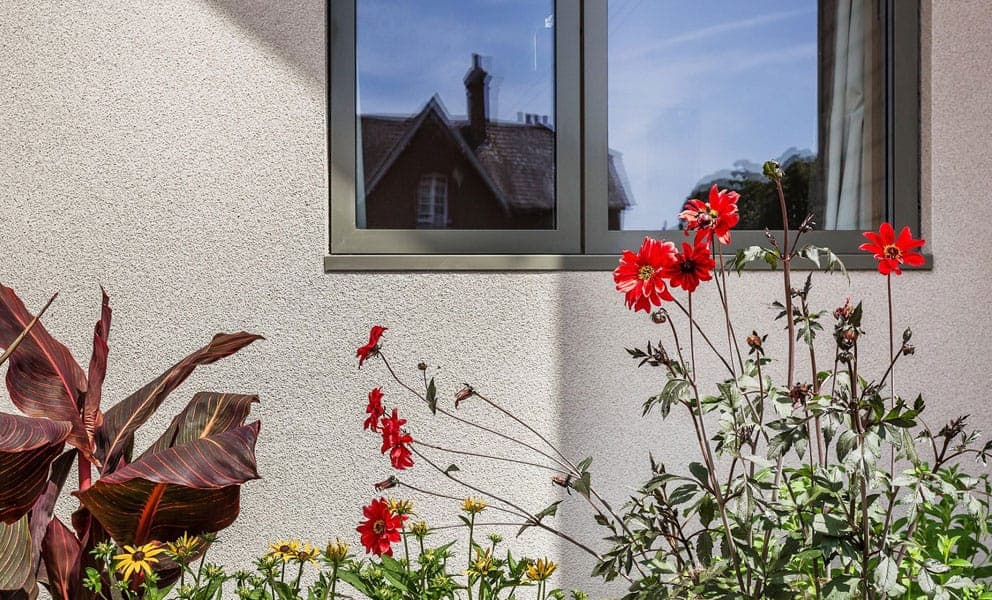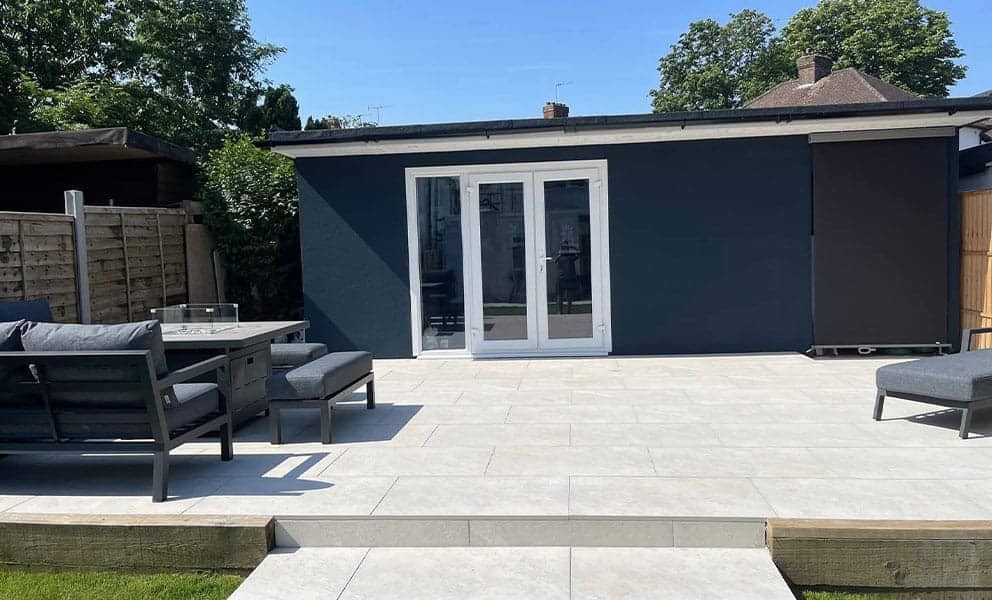
Rendering your walls is a great way to achieve a smooth finish and provide additional protection for the brickwork underneath. But did you know there are different types of render?
If you’re replacing the render on your walls, or installing new render over brickwork, it’s important to consider the different types of render and the qualities they offer.
In this post, we’ll look at six different types of render so you can decide which is best for your property.
Broadly speaking, there are three main categories of render:
As the names suggest, acrylic and silicone renders have man-made substances added. On the flipside, mineral renders are made from natural materials. That can be anything from sand and cement to lime.
Here’s a bit more on the different types of render and their distinct qualities…
Cement render is one of the most basic and traditional types of render. Sand and cement are mixed to make a mortar, which is applied to walls for a flat covering. It dries in a grey cement colour, which can then be painted. Alternatively, a pigment can be mixed into the mortar to give the render its own colour when it’s applied.
While cement render is simple and cheap, it’s not particularly attractive, long lasting or weather resistant.
Another different type of render is lime, which is made using lime and sand to form a mortar. Lime adds a flexible quality which makes this render less prone to cracking, as well as adding a more attractive natural quality to the finished look.
Lime render is relatively eco-friendly and much more durable than cement render. The main drawback compared to its cement counterpart is that lime render costs more and takes longer to apply.
Pebble dash is a unique type of render which is made by adding gravel, pebbles, shells or flint chips to a traditional cement or lime mortar. These can be added to the mixture (wet dash) or added to the wall after it has been applied (dry dash).
In both cases, pebble dash render adds a unique rough, textured quality to the walls and provides reasonable protection from the elements. It’s relatively cheap, depending on the mortar mix used initially, but can look dated especially when it becomes worn.
Acrylic render is made by adding acrylic resin to the render system. In doing so, the render gains various qualities from the acrylic including water-resistance and flexibility, making it less prone to cracking.
However, this man-made addition also makes acrylic render less environmentally friendly and reduces breathability when applied to your walls, which can lead to issues with damp over time.
Much like acrylic render, silicone render comprises a cement-based system with the addition of silicone. This adds water resistance and reduces the need for maintenance. It also remains breathable, unlike its acrylic counterpart.
However, as with acrylic, silicone render is far from eco-friendly and will cost considerably more than the alternatives.
Not all additions to traditional renders are damaging to the environment. SprayCork is a different type of render which incorporates the natural qualities of cork to give render more water-resistance, thermal efficiency, noise insulation and flexibility.
Because cork doesn’t require trees to be felled, it’s completely sustainable. Even better, the process of stripping bark away releases oxygen and reduces carbon dioxide!

It’s understandable that you want the best render for your home or commercial site. So, what is the best render for a house or any other building for that matter? The answer depends on whether you prioritise quality and longevity or purely cost. Below, we break down the different options based on some of the most important render qualities…
If you want something cheap, cement render is the clear solution, while lime render costs a little more for added durability. In the same sense, some people will say pebble dash is the best render because it’s equally inexpensive with a distinctive appearance.
However, it’s worth considering the long-term costs too. Cement and lime render might save you a few pounds short-term, but it’s going to cost more over time as you’ll need to repair cracks or replace your render much sooner. As such, a long-term solution like SprayCork could be best.
If you’re looking for long-lasting water-resistance, there are three options that stand out from the rest – silicone, acrylic and SprayCork. All three will protect your walls from the elements, including wind-driven rain which can be a nightmare for pointing. As such, they’ll prevent issues with water ingress and internal damp that can follow.
One of the main issues with acrylic is that it’s not breathable, making it unsuitable for permeable walls. Houses with these walls rely on their breathability to let moisture escape, whereas impermeable walls are present when other sources of ventilation are available.
Both silicone render and SprayCork and breathable, as are the various cheaper alternatives like cement, lime and pebbledash render.
Tired of render cracking? Rather than continually repairing and replacing, you might be better looking for a flexible render. In this case, the best render for your house will be acrylic, silicone or SprayCork. All three have had materials added to improve flexibility, allowing them to cope with the natural movement, expansion and contraction of the building’s other materials.
Most render types have a negative impact on the environment, whether it’s the emissions of the cement sector or non-biodegradability of silicone and acrylic. In contrast, SprayCork is natural, sustainable and reduces your building’s carbon footprint by improving insulation. Stripping the cork-rich bark from oak trees even improves their ability to absorb CO2, so it’s a win-win!
As you might expect, this is down to personal preference. Traditional cement render has quite a basic appearance, while pebbledash can be an acquired taste. On the flipside, SprayCork is flawlessly smooth and uniform for a stylish, modern appearance. There’s also a wide range of colours to choose from, so you can always get your render to match your personal style.
 Try SprayCork for yourself
Try SprayCork for yourselfSprayCork is a completely unique type of render, which gives you the best of both worlds when it comes to performance and sustainability. As you can see above, it’s arguably the best type of render for practically every requirement – from long-term cost-efficiency to water resistance, breathability, flexibility and sustainability.
It’s no surprise that it was named as a Green Hero by Grand Designs star Kevin McCloud – and even less surprising that people across the UK are keen to use it on their own properties.
Thankfully, we’ve even got that covered, with a network of approved applicators who are fully trained to apply SprayCork to our sky-high standards. To find your local approved applicator, simply enter a few details about your project online. And feel free to contact our team for any more information about our innovative cork-based render.
"*" indicates required fields